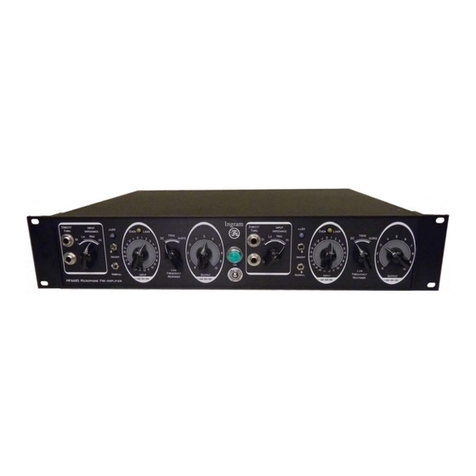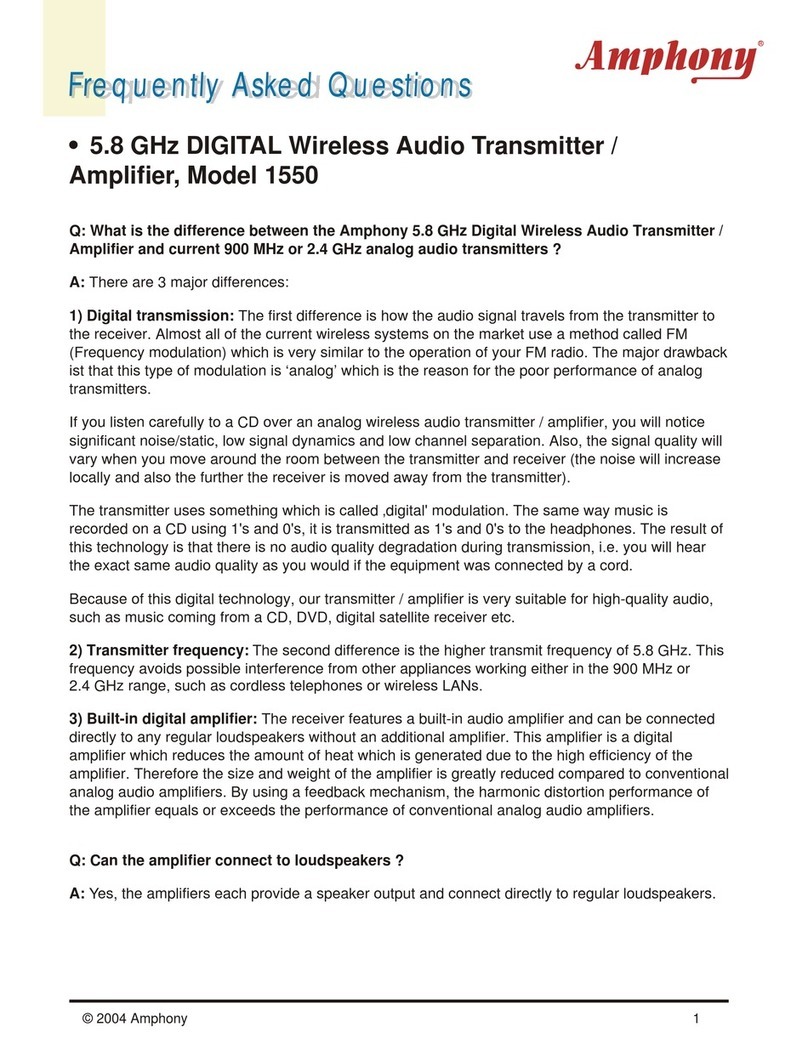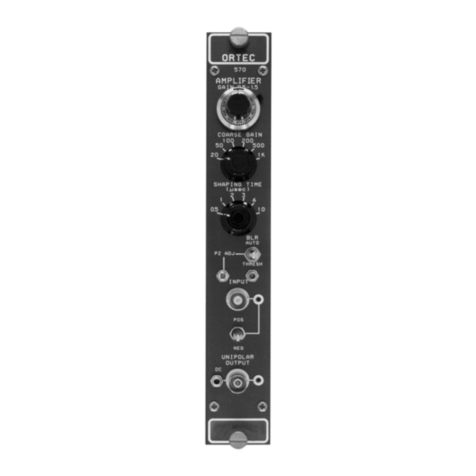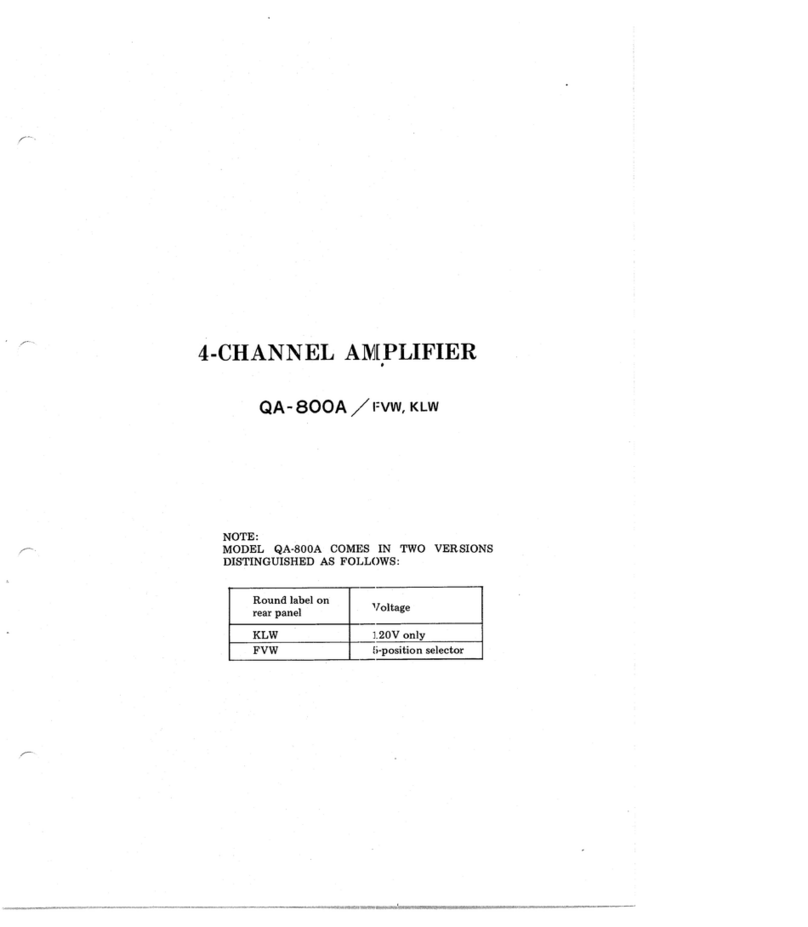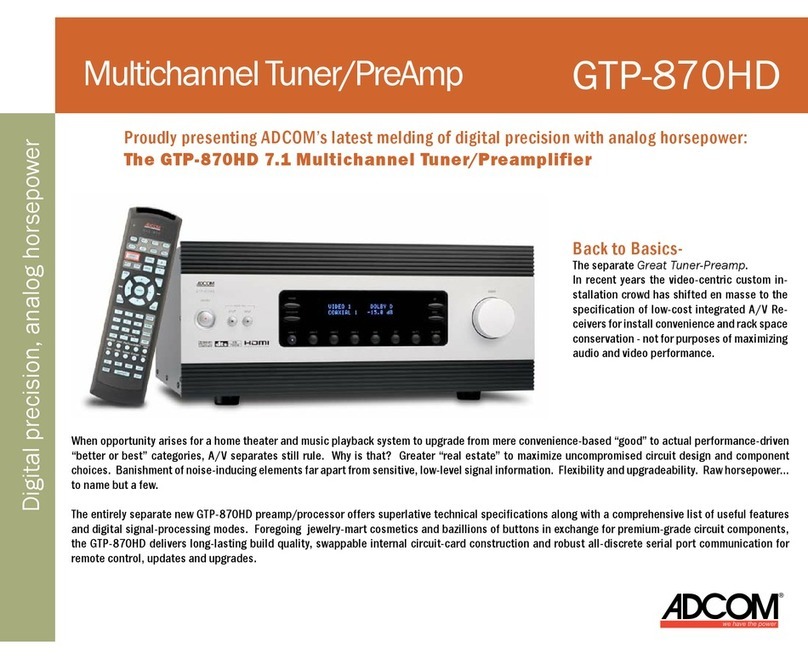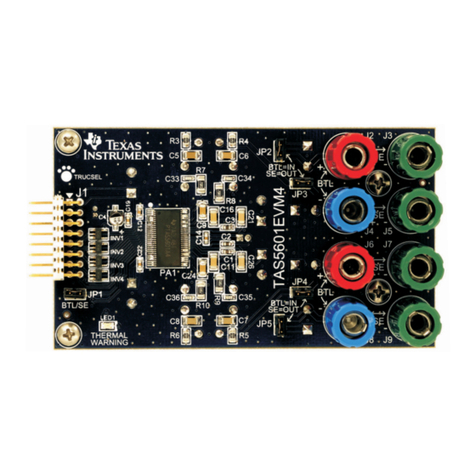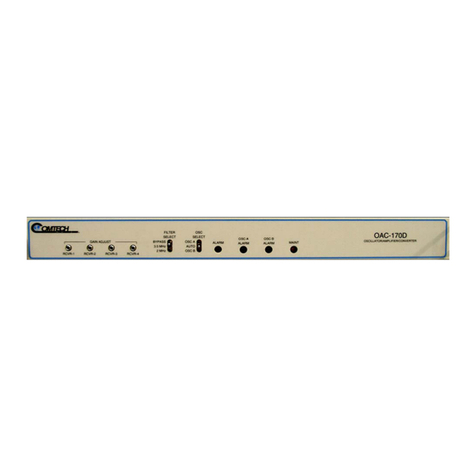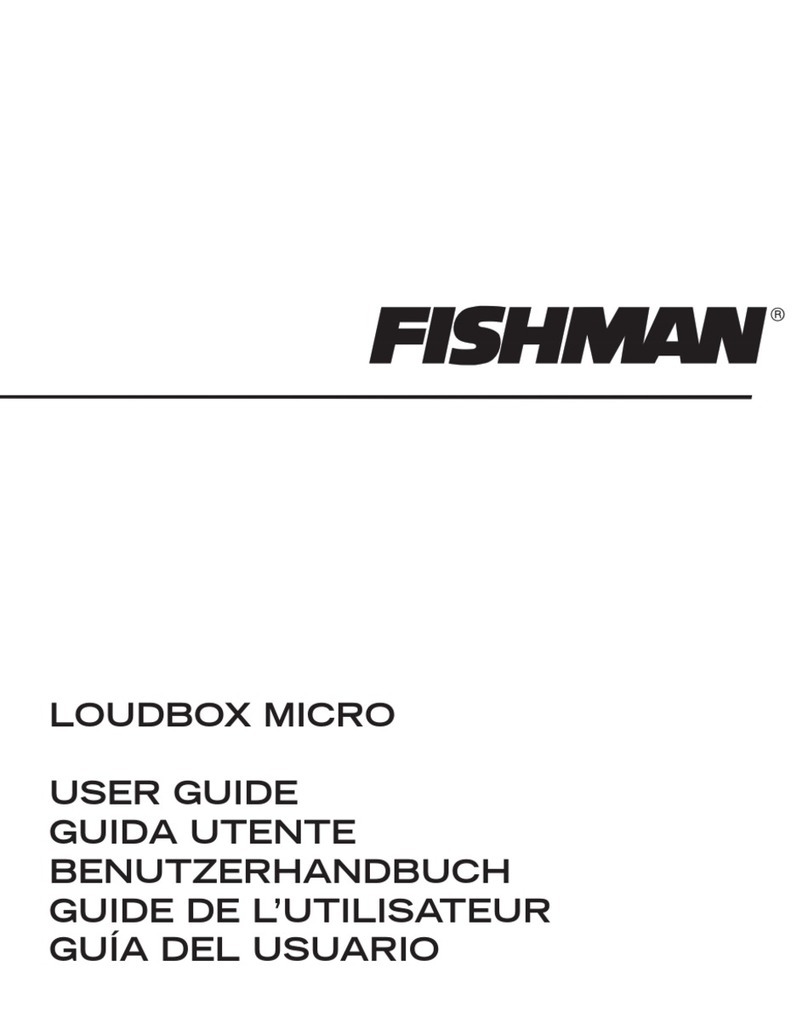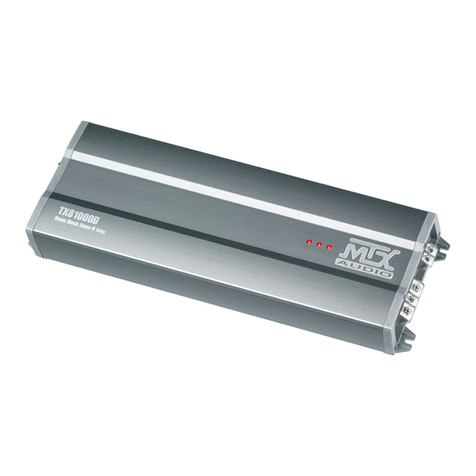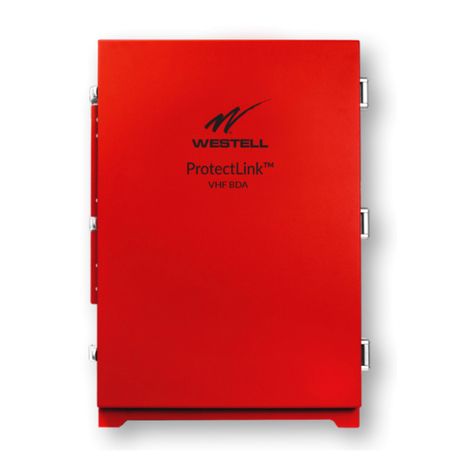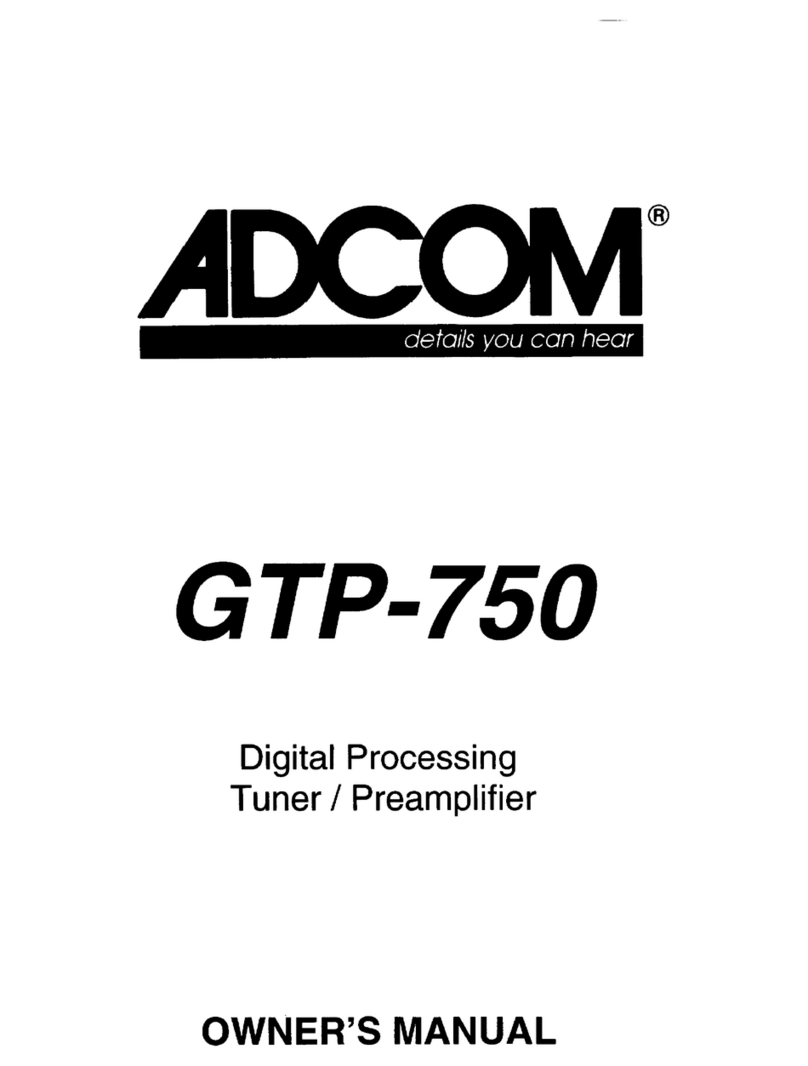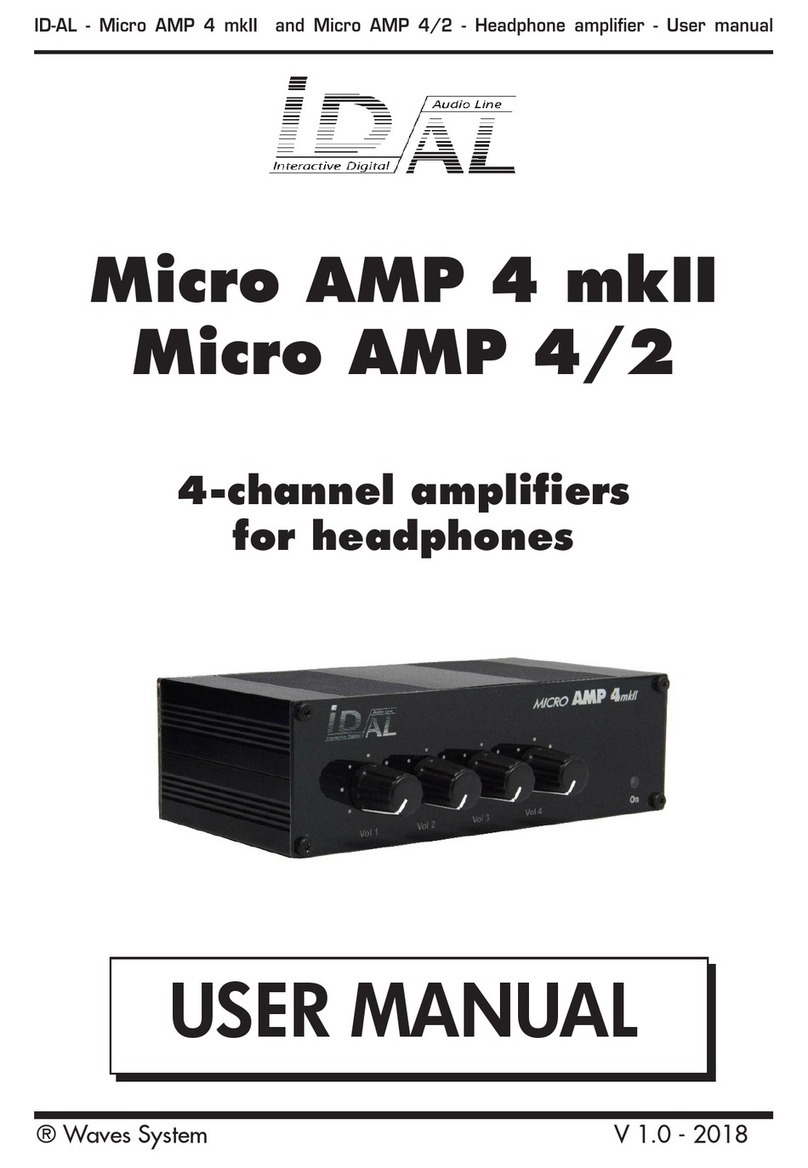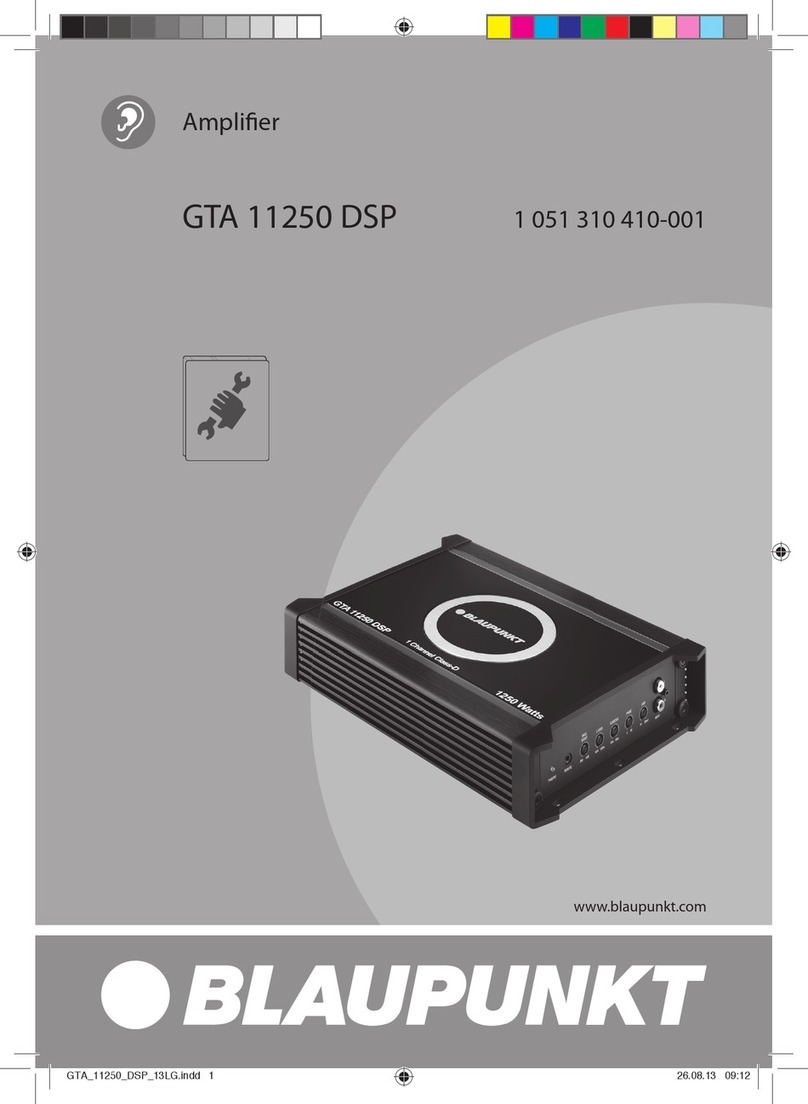Clear-Com Eclipse HX-Omega User manual

Eclipse®HX-Omega
A user guide for
Eclipse HX-Omega
systems
Part Number:399G150 Rev A
Date: 6 May 2015
User
Guide

User Guide |Eclipse HX Omega
Document Reference
Eclipse HX-Omega User Guide
Part Number: 399G150 Revision: A
Legal Disclaimers
Copyright © 2015 HME Clear-Com Ltd.
All rights reserved.
Clear-Com, the Clear-Com logo, and Clear-Com Concert are trademarks or
registered trademarks of HM Electronics, Inc.
The software described in this document is furnished under a license agreement
and may be used only in accordance with the terms of the agreement.
The product described in this document is distributed under licenses restricting
its use, copying, distribution, and decompilation/reverse engineering. No part of
this document may be reproduced in any form by any means without prior
written authorization of Clear-Com, an HME Company.
Clear-Com Offices are located in California, USA; Cambridge, UK, Dubai, UAE;
Montreal, Canada; and Beijing, China. Specific addresses and contact
information can be found on Clear-Com’s corporate website:
www.clearcom.com
Clear-Com Contacts
Americas and Asia-Pacific Headquarters
California, United States
Tel: +1.510.337.6600
Email: CustomerServicesUS@clearcom.com
Europe, Middle East, and Africa Headquarters
Cambridge, United Kingdom
Tel: +44 1223 815000
Email: SalesSupportEMEA@clearcom.com
Canada Office
Quebec, Canada
Tel: +1 (450) 653-9669
China Office
Beijing Representative Office
Beijing, P.R.China
Tel: +8610 65811360/65815577

User Guide |Eclipse HX Omega
Contents
1Important Safety Instructions...........................................................8
2Introduction ....................................................................................11
2.1 Summary of Chapters .................................................................. 11
2.2 Further information ...................................................................... 12
3Overview .........................................................................................13
3.1 Eclipse HX matrices...................................................................... 13
3.2 Eclipse HX-Omega matrix ............................................................. 13
3.2.1 Chassis and assembly ............................................................. 14
3.2.2 Power supplies....................................................................... 14
3.2.3 Main features of the Eclipse HX-Omega ..................................... 14
3.3 CPU card .................................................................................... 15
3.4 Interface cards ............................................................................ 16
3.4.1 MVX-A16 Analog port card....................................................... 16
3.4.2 E-FIB fiber interface card......................................................... 16
3.4.3 E-Que E1/T1 interface card...................................................... 17
3.4.4 E-MADI64 card ...................................................................... 17
3.4.5 IVC-32 IP interface card .......................................................... 18
3.4.6 LMC-64 interface card ............................................................. 19
3.5 Interface modules........................................................................ 19
3.6 EHX configuration software ........................................................... 20
3.7 User panels................................................................................. 21
4Installing the Eclipse HX-Omega .....................................................22
4.1 Before you begin the installation .................................................... 22
4.1.1 Checking the shipment............................................................ 22
4.1.2 Unpacking the System ............................................................ 22
4.1.3 Reconnecting the CPU Card’s backup battery.............................. 22
4.2 Installing the Eclipse HX-Omega .................................................... 24
4.2.1 Installing the power supplies.................................................... 25
4.2.2 Installing the rear connector panels .......................................... 25
4.3 Installing CPU cards ..................................................................... 26
4.3.1 Hot patching CPU cards........................................................... 27
4.3.2 Checking the CPU card installation ............................................ 27
4.4 Installing interface cards............................................................... 28
4.4.1 Combining interface cards in the matrix..................................... 29
4.4.2 Static sensitivity..................................................................... 30
4.4.3 Hot patching.......................................................................... 30
4.4.4 Configuration......................................................................... 31
4.4.5 Checking MVX-A16 analog port card installation.......................... 31

User Guide |Eclipse HX Omega
4.4.6 Slot numbering ...................................................................... 32
4.5 Wiring audio devices to the matrix ................................................. 33
4.6 Wiring panels to the matrix ........................................................... 33
4.6.1 4-Pair analog ......................................................................... 33
4.6.2 Single-pair digital ................................................................... 34
4.7Wiring CPU card interfaces ............................................................ 35
4.7.1 CPU card interface connectors .................................................. 36
4.8 DSE1/T1 Matrix to Matrix crossover cable connections ...................... 44
4.9 E1/T1 Matrix to Matrix straight cable connections ............................. 45
4.10 E1 to FreeSpeak®/ CellCom® / FreeSpeak II™ antenna straight cable
connection .......................................................................................... 45
5Using the Eclipse HX-Omega ...........................................................47
5.1 Creating and storing system configurations ..................................... 47
5.2 Setting the default IP Address ....................................................... 48
5.3 Using the CPU card Ethernet ports ................................................. 48
5.3.1 Configuration restrictions for Ethernet ports ............................... 48
5.4 CPU card fail-safes....................................................................... 49
5.5 CPU card lights and controls .......................................................... 50
5.5.1 Using the embedded configuration ............................................ 54
5.6 Analog port card (MVX-A16) front-panel lights and controls ............... 55
5.7 Power supplies ............................................................................ 57
5.8 Diagnosing power supply problems................................................. 58
5.8.1 Conditions that cause an alarm ................................................ 59
5.8.2 Main alarm light ..................................................................... 59
5.8.3 Alarm Reset button................................................................. 59
5.8.4 Auxiliary alarm lights .............................................................. 60
5.8.5 Power Supply Lights ............................................................... 61
5.9 Connecting the matrix .................................................................. 61
5.9.1 Eclipse HX-Omega rear connector panels ................................... 62
5.9.2 Connecting the CPU Card ........................................................ 63
5.9.3 Connecting interface cards....................................................... 63
6E-MADI64 card ................................................................................65
6.1 E-MADI64 front panel lights and controls ........................................ 66
6.2 E-MADI64 rear panel connectors .................................................... 69
6.3 MADI channels ............................................................................ 70
6.3.1 MADI channel labeling............................................................. 70
6.4 Setting up the E-MADI64 card ....................................................... 71
6.4.1 Connecting a Word Clock source............................................... 72
6.4.2 Connecting a video source ....................................................... 72
6.4.3 Connecting E-MADI64 Audio (using Coaxial or Fiber cable) ........... 72

User Guide |Eclipse HX Omega
6.5 V-Series Panels on E-MADI (Multi-channel Audio Digital Interface) ...... 73
6.5.1 Configuring audio over MADI, the general case........................... 73
6.5.2 Configuring audio over Optocore/ProGrid MADIs ......................... 74
6.6 Configuring binaural audio with E-MADI cards .................................. 75
6.7 Configuring binaural panel audio in software.................................... 75
6.7.1 Binaural audio over MADI, the general case ............................... 76
6.7.2 Binaural audio over Optocore/ProGrid MADIs.............................. 76
6.8 Set the EHX Audio Mixer screen option for binaural audio routing ....... 77
6.9 Upgrading the E-MADI64 card ....................................................... 78
7E-FIB fiber card ...............................................................................79
7.1 E-FIB front panel lights and controls ............................................... 80
7.2 E-FIB rear panel lights and connectors............................................ 83
7.3 Configuring a fiber optic connection................................................ 85
7.4 Simplex fiber cabling .................................................................... 86
7.4.1 Single card set redundancy...................................................... 86
7.4.2 Dual card set redundancy ........................................................ 88
7.4.3 Fault tolerance....................................................................... 88
8E-Que E1 / T1 card ..........................................................................91
8.1 Supported FreeSpeak / CellCom / FreeSpeak II connection options ..... 91
8.2 Supported direct and trunk connections (using the E1 and T1 protocols)
92
8.3 E-Que front panel lights and controls .............................................. 93
8.4 E-Que rear panel connectors ......................................................... 95
8.5 Synchronization........................................................................... 96
8.6 E-Que interface applications .......................................................... 96
8.6.1 FreeSpeak/CellCom/FreeSpeak II application ............................. 97
8.6.2 Powering the transceiver / antenna........................................... 99
8.6.3 Locating the transceiver / antenna............................................ 99
8.6.4 DECT Sync connections ......................................................... 100
8.7 E1 Trunk and Direct Modes ......................................................... 101
8.8 T1 Trunking .............................................................................. 104
8.9 Trunking failover ....................................................................... 106
9IVC-32 card for IP-based connections ...........................................107
9.1 IVC-32 front panel lights and controls........................................... 108
9.2 IVC-32 rear panel connectors ...................................................... 110
9.3 IVC-32 interface card applications ................................................ 111
9.3.1 V-Series IP Panels ................................................................ 111
9.3.2 IP linking and trunking .......................................................... 111
9.3.3 Concert users ...................................................................... 112

User Guide |Eclipse HX Omega
10 LMC-64 metering card ................................................................113
10.1 LMC-64 front panel lights and controls ....................................... 114
10.2 LMC-64 rear panel connectors................................................... 116
10.3 LMC-64 interface card applications ............................................ 117
11 Maintaining the Eclipse HX-Omega .............................................118
11.1 Routine maintenance recommendations ..................................... 118
11.1.1 Cleaning the matrix) .......................................................... 118
11.1.2 Spare parts ...................................................................... 118
11.2 Fail-Safe modes...................................................................... 119
11.2.1 Dual power supplies........................................................... 119
11.2.2 Hot patchability................................................................. 119
11.2.3 Onboard processors ........................................................... 120
11.2.4 Fail-Safe communication..................................................... 120
11.3 Troubleshooting ...................................................................... 120
11.3.1 Troubleshooting power supply problems ............................... 120
11.3.2 Troubleshooting data issues ................................................ 123
11.4 System block diagram ............................................................. 125
12 Specifications .............................................................................126
12.1 Matrix capabilities ................................................................... 126
12.2 Mechanical ............................................................................. 127
12.3 Environmental ........................................................................ 127
12.4 Matrix performance ................................................................. 127
12.5 E-MADI64 interface front card................................................... 127
12.6 E-MADI64 interface rear card.................................................... 128
12.7 E-MADI64 fiber cable............................................................... 128
12.8 E-MADI64 fiber transceiver....................................................... 128
12.9 E-MADI64 clock sources........................................................... 129
12.10 Fiber interface front card.......................................................... 129
12.11 Fiber interface rear card........................................................... 130
12.12 Fiber cable ............................................................................. 130
12.13 Fiber transceiver ..................................................................... 130
12.14 E-Que interface front card ........................................................ 131
12.15 E-Que interface rear card ......................................................... 131
12.16 IVC-32 interface front card ....................................................... 131
12.17 IVC-32 interface rear card ........................................................ 131
12.18 LMC-64 interface front card ...................................................... 132
12.19 LMC-64 interface rear card ....................................................... 132

User Guide |Eclipse HX Omega
12.20 Analog port card (MVX-A16) ..................................................... 132
12.21 Data interface: 16 bi-directional ................................................ 133
12.22 Backplane connector: FCI/BERG Metral ...................................... 133
12.23 System programming .............................................................. 134
12.24 Minimum PC requirements (for EHX software) ............................. 134
12.25 Recommended PC requirements (for EHX software) ..................... 135
12.26 Power supply unit ................................................................... 135
13 Glossary......................................................................................137

1Important Safety Instructions
1) Read these instructions.
2) Keep these instructions.
3) Heed all warnings.
4) Follow all instructions.
5) Do not use this apparatus near water.
6) Clean only with dry cloth.
7) Do not block any ventilation openings. Install in accordance with the
manufacturer’s instructions.
8) Do not install near any heat sources such as radiators, heat registers,
stoves, or other apparatus (including amplifiers) that produce heat.
9) Do not defeat the safety purpose of the polarized or grounding-type
plug. A polarized plug has two blades and a third grounding prong. The
wide blade or the third prong are provided for your safety. If the
provided plug does not fit into your outlet, consult an electrician for
replacement of the obsolete outlet.
10) Protect the power cord from being walked on or pinched particularly at
plugs, convenience receptacles, and the point where they exit from the
apparatus.
11) Only use attachments/accessories specified by the manufacturer.
12) Use only with the cart, stand, tripod, bracket, or table specified by the
manufacturer, or sold with the apparatus. When a cart is used, use
caution when moving the cart/apparatus combination to avoid injury
from tip-over.
13) Unplug this apparatus during lightning storms or when unused for long
periods of time.
14) Refer all servicing to qualified service personnel. Servicing is required
when the apparatus has been damaged in any way, such as power-cord
supply or plug is damaged, liquid has been spilled or objects have fallen
into the apparatus, the apparatus has been exposed to rain or moisture,
does not operate normally, or has been dropped.

User Guide |Eclipse HX Omega
15) Warning: To reduce the risk of fire or electric shock, do not expose this
product to rain or moisture.

User Guide |Eclipse HX Omega
Safety Symbols
Familiarize yourself with the safety symbols in Figure 1-1: Safety symbols.
These symbols are displayed on the apparatus and warn you of the potential
danger of electric shock if the system is used improperly. They also refer you to
important operating and maintenance instructions in the product user manual.
Figure 1-1: Safety symbols
Mains Power Cord
Eclipse Matrix devices are powered by an internal power supply. The cord to
connect the internal power supply to the mains supply must conform to the
following:
The mains power cord shall have an IEC C13 connector at one end and
a mains power plug at the other end.
An IEC C13 plug has three pins, the center pin carrying the earth /
ground. The other two pins carry neutral and live circuits.
The conductors of the mains cords shall have adequate cross-sectional
area for rated current consumption of the equipment.
The mains plug that connects to the mains supply must be approved for
use in the country where the equipment is to be used.
The mains power cord must be an IEC mains power cord complying
with standard IEC60320; IEC320/C13.
Mains power cords used in the U.S. must also comply with standard
UL817.

User Guide |Eclipse HX Omega
2Introduction
The Eclipse HX system is a digital point-to-point intercom platform, designed to
seamlessly integrate your entire your entire intercom infrastructure (digital,
wireless, IP-based and analog intercom systems). The system comprises
matrices, interface cards and modules, user panels and interface matrices.
At the heart of the system is the central matrix, comprising a system matrix and
the highly intuitive EHX configuration software, run from an external PC. The
Eclipse HX-Omega User Guide describes how to use the largest and most
powerful system matrix in the Eclipse product range, the Eclipse HX-Omega.
The guide:
Provides an overview of the Eclipse HX-Omega matrix, including the
interface modules and cards that you can fit to the matrix.
Describes how to install, use and maintain an Eclipse HX-Omega matrix.
Describes how to use E-FIB fiber interface cards to link matrices
together.
Describes how to use the E-Que, IVC-32, E-MADI64 and LMC-64
interface cards.
Provides detailed specifications for the Eclipse HX-Omega.
Note: For more detailed information about installing an Eclipse HX system, see the
Eclipse HX System Frame (Matrix) Installation Guide.
For more information about EHX, see your EHX documentation, including EHX
Help (integrated with your software).
Servicing instructions are for use by qualified
personnel only. To reduce the risk of electric shock, do
not perform any servicing other than that described by
this guide, unless qualified to do so. Refer all servicing
to qualified service personnel.
2.1 Summary of Chapters
Chapter
Summary
1. Important Safety
Instructions
UL approved safety instructions concerning the
installation, maintenance and operation of the Eclipse
HX-Omega.
2. Introduction
Introduction to the Eclipse HX-Omega User Guide
(this guide).
3. Overview
An overview of the Eclipse HX system, the Eclipse HX-
Omega matrix, and the cards and interface modules
that may be fitted to the matrix.
4. Installing the
Eclipse HX-Omega
Describes how to install the Eclipse HX-Omega
matrix, including CPU, analog port and expansion
cards.

User Guide |Eclipse HX Omega
5. Using the Eclipse
HX-Omega
Describes how to use the Eclipse HX-Omega,
including the front panel controls and the information
LEDs, the CPU card, and power supplies.
6. E-MADI64 card
Describes the E-MADI64 card, which provides up to
64 duplex channels of AES3 digital audio over a
coaxial cable or fiber pair between compatible
devices. The card supports both direct and trunk
connections.
7.E-FIB fiber card
Describes how to set up and use the E-FIB fiber card,
which is used to connect the Eclipse HX-Omega with
other Eclipse HX matrices.
8. E-Que E1/T1 card
Describes how to set up and use the E-Que interface,
which is used to connect the Eclipse HX-Omega with
wireless intercom systems (such as CellCom®/
FreeSpeak®/ FreeSpeak II™), E1 and T1 trunk lines,
and E1 direct lines.
9. IVC-32 card for IP-
based connections
Describes how to set up and use the IVC-32 interface,
which enables the Eclipse HX-Omega to connect over
IP to V-Series IP panels, Concert servers and other
IP-based intercom systems.
10. LMC-64 metering
card
Describes how to set up and use the LMC-64 card to
provide audio level metering to Production Maestro
Pro (the Eclipse HX centralized routing tool
application).
11. Maintaining the
Eclipse HX-Omega
Describes maintenance tasks for the Eclipse HX-
Omega, including the replacement of components.
12. Specifications
Technical specifications for the Eclipse HX-Omega.
13. Glossary
Glossary of terms used in relation to the Eclipse HX
system
Table 2-1: Summary of Chapters
2.2 Further information
For more information about any of the Eclipse HX system components (devices)
referenced in this guide (including matrices, intercom cards, interface modules
and software), see the specific manual / documentation for that device or
software.
Eclipse HX documentation is available from:
Your product DVD-ROM.
The Clear-Com website (http://www.clearcom.com/product/digital-
matrix).
For sales information, see your Clear-Com sales representative. For contact
information, see Page 2 of this guide.

User Guide |Eclipse HX Omega
3Overview
This chapter provides an overview of the Eclipse HX-Omega matrix, including the
extension cards and interface modules that can be fitted to the matrix.
3.1 Eclipse HX matrices
There are four types of Eclipse HX system matrix available from Clear-Com:
Matrix
Description
Eclipse HX-Omega
The largest matrix in the
Eclipse HX range.
The Eclipse HX-Omega has
slots for
2 CPU cards and 15 interface
cards in a six rack unit (6RU)
frame.
For more information, see this
guide.
Eclipse HX-Median
The Eclipse HX-Median has
slots for:
2 CPU cards, 7 interface cards,
and 8 interface modules in a
six rack unit (6RU) frame.
For more information, see the
Eclipse HX-Median User
Guide.
Eclipse HX-Delta
The Eclipse HX-Delta has slots
for 2 CPU cards, 4 interface
cards and 3 interface modules
in a three rack unit (3RU)
frame.
For more information, see the
Eclipse HX-Delta User
Guide.
Eclipse HX-PiCo
The Eclipse HX-PiCo provides
up to 32 panel and 4 additional
four-wire ports in a one rack
unit (1RU).
For more information, see the
Eclipse HX-PiCo User Guide.
Table 3-1: Eclipse HX Matrices
3.2 Eclipse HX-Omega matrix
A complete Eclipse HX-Omega system consists of a central matrix and the
remote audio devices (such as user panels, interface cards, interface modules,
4-wire devices and intercom systems) connected to it.

User Guide |Eclipse HX Omega
Note: The term central matrix is used to differentiate the core hardware and software
from the connected user panels, interface modules and other intercom devices.
The central matrix itself consists of the matrix hardware (the Eclipse HX-Omega
matrix) and the EHX configuration software.
3.2.1 Chassis and assembly
The matrix chassis is a metal rectangular box which measures six rack units
(6RU) high and 19-inches wide (26.9 cm x 48.3 cm). It has slots for 2 CPU
cards, and 15 interface cards. It has 2 power supplies.
RJ-45 and fiber-optic connectors are located on removable plates on the rear of
the chassis. These connect the CPU and interface cards to intercom devices and
media such as user panels, interfaces, four-wire audio equipment, wireless
equipment and fiber-optic cables.
The matrix assembly consists of the following components:
The metal chassis for the circuit cards and power supplies.
The removable and replaceable circuit cards.
The removable and replaceable power supplies.
The rear panel connectors which link the circuit cards to devices and
media such as intercom panels, interfaces, wireless equipment and
optical fiber.
3.2.2 Power supplies
The Eclipse HX-Omega matrix has two Euro Cassette power supply units
that can be easily installed or removed as needed. One power supply unit can
power an entire matrix. The second unit provides a backup in case of failure or
damage to the first unit.
In addition, the two supplies have separate IEC connectors to AC mains, and are
designed for completely automatic and transparent changeover between supplies
in the event of a power outage in one of the AC mains circuits.
An over-temperature sensor is connected to both an audible failure alarm and a
warning light, allowing the system operator to diagnose and correct any power
anomalies while the system remains operational.
3.2.3 Main features of the Eclipse HX-Omega
Features of the Eclipse HX-Omega matrix system include:
Full audio bandwidth throughout the signal chain, producing superior
broadcast audio quality. The system maintains 24-bit sampling and 30
Hz to 22 kHz frequency response.
Support for multiple analog port interfaces (MVX-A16), providing 16
analog ports each. If MVX-A16 cards are fitted to all 15 slots available,
the Eclipse HX-Omega can provide up to 240 analog ports.
Fail-safe redundancy achieved by two processor cards and two power
supplies.

User Guide |Eclipse HX Omega
Note: Power supplies automatically switch to the correct voltage, for
compatibility around the world.
Eight general purpose inputs and eight relays, located directly on the
matrix.
Full compatibility with V-Series and i-Series user panels.
Matrices that link across cities, nations, or continents through trunk lines
and fiber.
The same fiber-networking interface (E-FIB) as the Eclipse HX-Median
and Eclipse HX-Delta matrices.
Connection to FreeSpeak / CellCom / FreeSpeak II antennas and splitters
using the E-Que interface.
Connection to IP enabled V-Series panels and Concert users over IP
networks using the IVC-32 interface.
Audio level metering over IP networks using the LMC-64 interface card.
Up to 64 duplex channels of AES3 audio over a coaxial cable or fiber pair
using the E-MADI64 interface card.
VOX-programmable audio, which visually cues you at the matrix when
audio transmits at a programmed threshold on a connected intercom
panel or interface.
Virtual operation in which a complete networked system can be operated
and maintained from anywhere in the world. The system provides both
local area network and Internet access to the central matrix.
Visual and intuitive EHX configuration software.
3.3 CPU card
Two CPU cards are fitted to each Eclipse HX-Median system, in a master and
slave relationship. The second CPU card provides redundancy in the case of
outages or planned maintenance.
The master CPU card:
Provides the serial data and Ethernet connection to the connected EHX
PC.
Coordinates the data flow between the other interface cards and modules
in the system, allowing them to communicate with each other.
Stores up to four complete configurations, enabling the selection and
activation of a configuration directly from the card.
Includes an additional, embedded configuration, which may be activated
from the card for fast fault checking after the installation or upgrade of
the Eclipse HX system.
Note: A configuration determines the operating parameters of the Eclipse HX matrix
system, including port functions, talk-and-listen audio routes, controls and other
functions. Configurations are created and managed in EHX, for download to the

User Guide |Eclipse HX Omega
matrix or matrices. For more information about EHX, see 3.6 EHX
configuration software.
The cards slide vertically into the front of the matrix and connect to the
backplane.
3.4 Interface cards
3.4.1 MVX-A16 Analog port card
An MVX-A16 analog port card controls the operation of panels and interfaces
connected to it. Panels and interfaces connect to the port card through an RJ-45
connector (port) on the HX-Omega rear panel. Shielded category-5 cable
attaches the panel or interface to the RJ-45 connector.
The MVX-A16 analog port card sends balanced audio and RS-422 data signals to
connected audio equipment through 4-pair shielded category-5 cable. The card
connects up to 16 audio devices (such as intercom panels, interfaces, or 4-wire
audio equipment) to the central matrix.
Each audio device connected to a port card communicates with all other audio
devices in the system and with the central matrix.
For intelligent linking, shielded CAT-5 cable is run from a port on one Eclipse HX-
Omega matrix to a port on a second Eclipse HX-Omega matrix to form a
trunkline connection.
Note: For the order in which all interface cards must be installed to the Eclipse HX-
Omega, see 4.4 Installing interface cards.
Note: The term central matrix is used to differentiate the core hardware and software
from the connected intercom panels and interfaces. The central matrix itself
consists of the matrix hardware (the Eclipse HX-Omega matrix) and the EHX
configuration software.
Cards slide vertically into the front of the matrix and connect to the backplane.
3.4.2 E-FIB fiber interface card
E-FIB fiber interfaces connect Eclipse HX matrices together to provide a high
speed, dual redundant link to transfer audio samples and data between systems.
These connections can be configured in various ways to provide protection
against the loss of a link or a node.
Each E-FIB fiber interface comprises:
A front card with various status indicators.
A rear card with two Duplex LC Terminated fiber optic connectors
(TXVRA and TXVRB).
E-FIB interfaces should be fitted to slot 14 or 15 of the HX-Omega matrix
(furthest away from the CPU cards).
Note: For the order in which all interface cards must be installed to the Eclipse HX-
Omega, see 4.4 Installing interface cards.

User Guide |Eclipse HX Omega
Cards slide vertically into the front of the matrix and connect to the backplane.
3.4.3 E-Que E1/T1 interface card
The E-Que E1/T1 interface allows the Eclipse HX matrix to connect to
FreeSpeak/CellCom/ FreeSpeak II antennas and FreeSpeak/CellCom/ FreeSpeak
II antenna splitters.
Each E-Que interface comprises:
A front card with a reset button and various status indicators.
A rear card with eleven RJ-45 ports giving eight standard ports, DECT
sync in and out and a LAN port for diagnostic use.
Each E-Que front card has status LEDs for power, port activity and LAN status.
The port activity LEDs show when
A device is connected to an E1 port.
A connection has been established between the E1 port and the
connected device.
A total of four E-Que, IVC-32 or LMC-64 interface cards may be fitted to an
Eclipse HX-Omega unless the matrix is fitted with a Power-One PSU. If the
matrix has a Power-One PSU, up to six E-Que, IVC-32 or LMC-64 cards may be
fitted with the following condition:
You can only have four wireless E-Que cards
You can only have four E-Que cards with EM signaling enabled.
For the order in which all interface cards must be installed to the Eclipse HX-
Omega, see 4.4 Installing interface cards.
Note: The EHX configuration software provides E1 and T1 trunking (see 3.6 EHX
configuration software).
Cards slide vertically into the front of the matrix and connect to the backplane.
3.4.4 E-MADI64 card
The E-MADI64 is a MADI (Multichannel Audio Digital Interface) card, providing
up to 64 duplex channels of AES3 digital audio over a coaxial cable or fiber pair
between compatible devices. The E-MADI64 card supports both direct and trunk
connections.
The E-MADI64 card supports up to 32 V-Series Panels over a suitable
infrastructure. See 6.5 V-Series Panels on E-MADI (Multi-channel Audio Digital
Interface) for more information
Note: You have the option in EHX to limit the E-MADI64 card to either 32, 56 or 64
channels of audio. All MADI channels have standard EHX settings, including VOX
and in-use tally. See also 6E-MADI64 card.

User Guide |Eclipse HX Omega
Each E-MADI64 card set comprises:
A front card with pin reset and various status indicators (including
channel quantity, sample rate, power and diagnostic (active and error)
indicators).
A rear card with a MADI fiber connector, MADI input and output coaxial
cable connectors, and coaxial Video / Word clock input.
Note: For the order in which all interface cards must be installed to the Eclipse HX-
Omega, see 4.4 Installing interface cards.
Cards slide vertically into the front of the matrix and connect to the backplane.
3.4.5 IVC-32 IP interface card
The IVC-32 interface allows the Eclipse matrix to connect to IP enabled V-Series
panels, other matrices and Concert users via an IP network.
Each IVC-32 interface comprises:
A front card with a reset button and various status indicators.
A rear card with eleven RJ-45 ports giving eight E1/T1 ports (not used),
DECT sync in and out (not used) and a LAN port for IP connectivity.
Each IVC-32 front card has status LEDs for power, port activity and LAN status.
The LAN indicators show whether there is a LAN connection and the IP activity
on the LAN port.
A total of four E-Que, IVC-32 or LMC-64 interface cards may be fitted to an
Eclipse HX-Omega unless the matrix is fitted with a Power-One PSU. If the
matrix has a Power-One PSU, up to six E-Que, IVC-32 or LMC-64 cards may be
fitted with the following condition:
You can only have four wireless E-Que cards
You can only have four E-Que cards with EM signaling enabled.
Note: For the order in which interface cards must be installed to the Eclipse HX-
Omega, see 4.4 Installing interface cards.
Cards slide vertically into the front of the matrix and connect to the backplane.
IVC-32 Redundant Card
You can add an IVC-32 Redundant Card that provides fail-over redundancy for
one or more IVC-32 Cards in the matrix.
An IVC-32 Card will fail-over to the IVC-32 Redundant Card under the following
conditions:
• All configured VoIP ports are unconnected for longer than 90 seconds.
• The IVC-32 Card is detected as absent from the VME backplane.
• It is requested via the EHX Event Log.
A switch back from a redundant card back to a failed card only occurs under the
following condition:

User Guide |Eclipse HX Omega
The redundant card has failed. If the original card is still in error, then it
will switch back and forward until corrective action is taken.
3.4.6 LMC-64 interface card
The LMC-64 interface allows the Eclipse HX matrix to provide Production Maestro
Pro (routing software) clients with audio level metering of Party Lines
(Conferences) and 4-Wire ports via an IP network.
Each LMC-64 interface comprises:
A front card with a reset button and various status indicators.
A rear card with eleven RJ45 ports giving eight E1/T1 ports (not used),
DECT sync in and out (not used) and a LAN port for IP connectivity.
Each LMC-64 front card has status LEDs for power, port activity and LAN status.
The LAN indicators show whether there is a LAN connection and the IP activity
on the LAN port.
A total of four E-Que, IVC-32 or LMC-64 interface cards may be fitted to an
Eclipse HX-Omega unless the matrix is fitted with a Power-One PSU. If the
matrix has a Power-One PSU, up to six E-Que, IVC-32 or LMC-64 cards may be
fitted with the following condition:
You can only have four wireless E-Que cards
You can only have four E-Que cards with EM signaling enabled.
Note: For the order in which interface cards must be installed to the Eclipse HX-
Omega, see 4.4 Installing interface cards.
Cards slide vertically into the front of the matrix and connect to the backplane.
3.5 Interface modules
Interface modules convert the 4-wire signals of a central matrix port to other
types of signals that communicate with devices such as telephones, camera
intercoms, two-way radios, and so on. In this way non-4-wire devices can
communicate with the central matrix.
Note: The term central matrix is used to differentiate the core hardware and software
from the connected intercom panels and interfaces. The central matrix itself
consists of the matrix hardware (the Eclipse HX-Omega matrix) and the EHX
configuration software.
Each interface module has hardware connectors to connect to both the central
matrix and the external device that communicates with the central matrix.
Most interface modules connect to the central matrix via shielded CAT-5 cable
terminated with RJ-45 connectors.
Note: The DIG-2 digital interface module connects to the central matrix via double-
shielded 24 AWG conductor category-6 enhanced (CAT-6E) STP cable.
Note: The type of cable used to connect the interface module to the non-4-wire device
varies with the device. For more information about the operation, installation,
and maintenance of an interface module, as well as cabling information, see the
specific documentation (user guide / manual) for each interface.

User Guide |Eclipse HX Omega
The following interface modules are compatible with the Eclipse HX-Omega
matrix:
TEL-14 telephone interface module.
CCI-22 dual party-line interface module.
FOR-22 four-wire interface.
GPI-6 general purpose inputs interface module.
RLY-6 relay (general-purpose outputs) interface module.
AES-6 digital interface module used with V-Series panels fitted with the
AES-3 option card. It may also be used with AES-3 compliant third party
equipment.
DIG-2 digital interface module (transparent to the system, configured in
EHX as the type of panel it is connected to). Only used for V-Series panels
fitted with the T-Adapter option card and ICSxx T type panels.
3.6 EHX configuration software
The EHX configuration software controls the operation of the connected audio
devices by sending signals to the circuit cards in the matrix, which then relays
the signals to the audio devices.
Configurations (the operating parameters of complete system setups) are
created and managed in EHX.
Up to four complete system configurations can be stored in the CPU card of the
Eclipse HX Omega, for retrieval and activation when required. The external PC
that hosts the EHX software can store an almost unlimited number of complete
system configurations (the number is only limited by the available memory
space on the PC).
You can download the configurations to the Eclipse HX-Omega as required.
EHX 8.0 runs on the following versions of Windows:
Microsoft Windows 7 (32-bit and 64-bit).
Microsoft Windows 8.1 (32-bit and 64-bit)
Microsoft Windows Server 2008 SP2 (32-bit and 64-bit).
Microsoft Windows Server 2008 R2 (64-bit).
Note: Operation on other platforms is no longer supported.
When running EHX on Windows operating systems, the client and server can run
on separate machines connected over a network.
You can use EHX to perform a wide range of configuration tasks, including:
Assigning labels (names) to ports and user panels.
Creating point-to-point and fixed group (partyline) communications
between connected audio devices.
Table of contents

